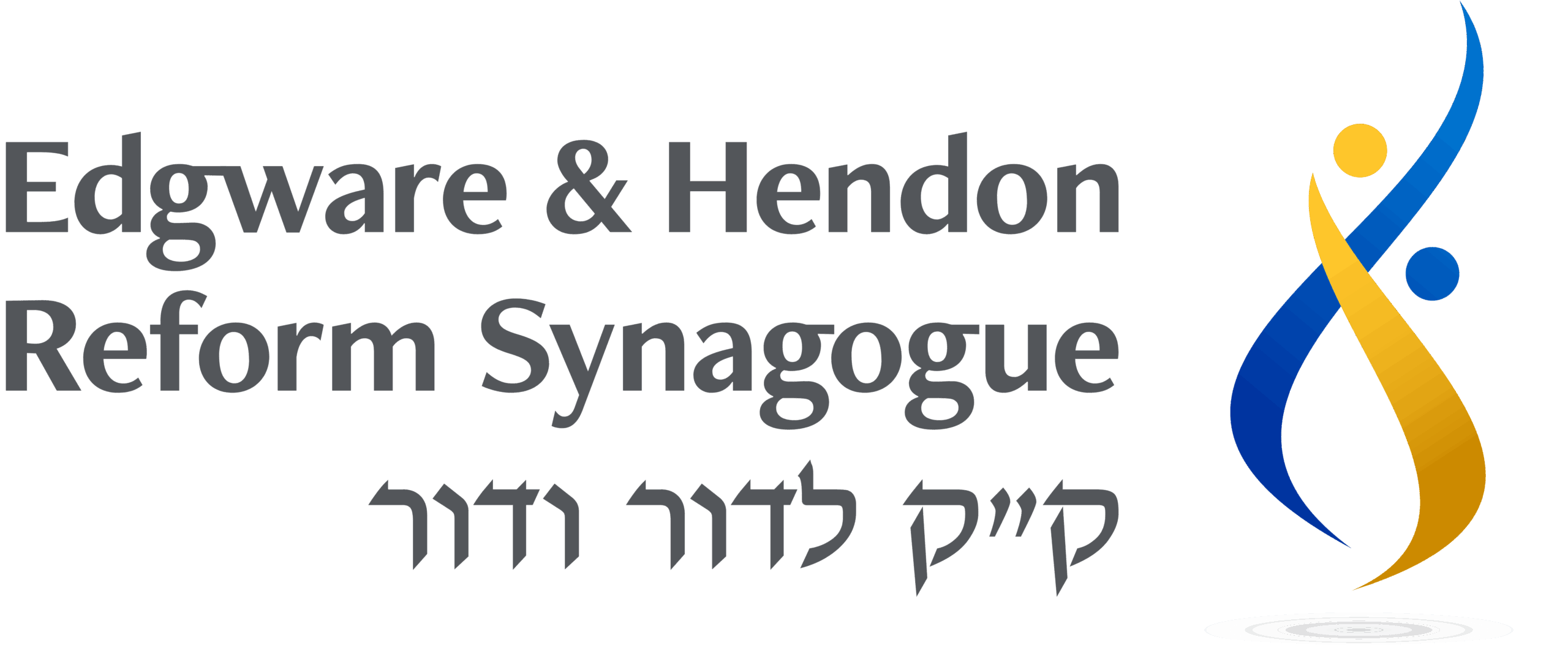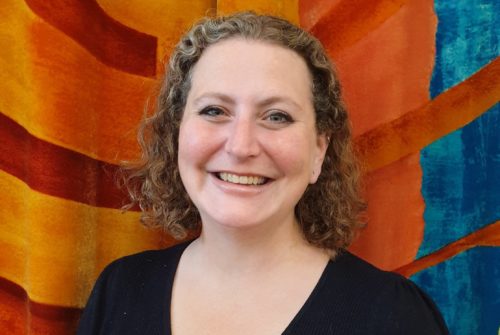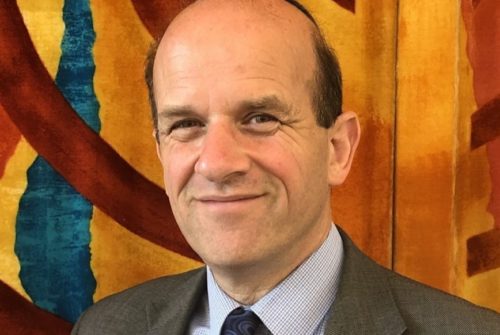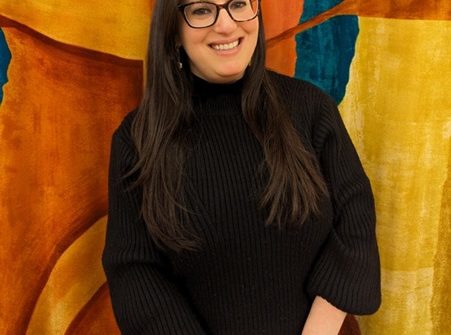I cry at the movies. I have favourite musicals that I will try to visit on a regular basis in order to have a good cry. The catharsis of having a really good sob shouldn’t be underestimated. The ancient world was replete with examples of the hiring of women whose job it was to wail and weep at funerals. In ancient Egypt, Greece, and yes, even ancient Israel. In Jeremiah 9:16 we heard Clive read this morning about the ‘wailing women’ or ‘dirge singers’ – they were paid to start wailing ‘that our eyes might run with tears’. There was something in their loud sobbing that gave permission to others to allow their own grief to flow.
And that is, to some extent, what the fast of Tisha B’Av, which starts tonight, is about. We will be asked to express a collective, communal grief. We are not mourning for a personal loss, but a loss we have experienced again and again as a people. We have rehearsed modes of performing this grief; not only through fasting but with sitting on low chairs, not wearing leather, not shaving, and chanting the mournful book of Eichah – Lamentations, which has its own unique trope.
As a community that doesn’t pray for the rebuilding of the Temple, why will we be gathering tonight to mourn for it? There are multiple answers to that question, but I think a part of it is the importance of ritualising what we do with our grief – whether individual or communal. Individually we have various touchstone moments through the year to be present with our grief – yahrzeit, yizkor, Ellul, and communally the same is true too. We may not wish to return to the past as it was, but we benefit from having space to acknowledge what was lost, the pain suffered through the centuries of exile and persecution, and the brokenness we continue to experience in the world around us. Of course Tisha B’Av has been layered with Jewish tragedies well beyond the temple – for example it is said to be the date on which the Jews were exiled from Spain in 1492 and from England in 1290. So we mourn far more than just the loss of the centre of Jewish life in the Temple, but the ongoing persecutions that followed afterwards.
We sometimes create spaces for this grief at times of great joy – like last Sunday, as I celebrated a wedding under a beautiful outdoor chuppah by the sea in Whitstable. When we smashed the glasses and remembered the destruction of the temple, we took a moment to remember the brokenness of the world. And we hoped that this couple, working together, might be a part of bringing healing to that brokenness.
Because experiencing our grief is also about creating space for hope and healing. When I publically sob at the end of Blood Brothers or even in Bambi, it is a release, an outlet. Communally it is a way to help us express so much of what we carry through life. In expressing it and holding it up to the light, even if briefly, we are able to let the light in again. The shadow the Holocaust has cast over our lives for the last few generations has created immeasurable changes to us as a people. But we cannot live in the darkness of that shadow every day and experience the fullness that life has to offer. We have moments, like Yom HaShoah, to revisit this huge trauma. But we also have to live life beyond that shadow, or our survival will mean little.
Our calendar reflects this too. Just 6 days after we grieve for the moment that Temple Judaism formally ended, our cycle of festivals continues with its own subtle commentary. The 15th of Av, which falls next Friday, is jokingly referred to as the Jewish Valentines day; a festival celebrating love. It’s quite the gear shift from communal wailing to romance. But the shift is an important one to clock. Grief is never the end. Joy and laughter will flow again. For some it will be harder than others, but the goal of our individual rituals of grieving, as well as our communal ones, are to help us process and experience our loss, so that we can learn how to walk through life again, even how to celebrate love again.
Rabbi Jen Gubitz wrote in 2020[i] about the challenge of planning her own chuppah when the original date had to be cancelled due to a Covid lock down. It was rescheduled just before Tisha B’Av, and she wrestled with what it meant to throw a simchah in the middle of a time of communal grief. She reflected on how the entire 5 months before the wedding had been a very literal time of communal grief (one I suspect we are still processing). She cites a Talmudic debate in which the Rabbis wondered what should happen if a funeral procession and a wedding procession encountered each other on the road – which should take precedence. The Talmud concludes that the wedding should take precedence. Joy and gladness take the right of way. Rabbi Gubitz struggles with this, wishing we could just widen the road and make room for both. But she concludes with these words:
What the rabbis of the Talmud nudge us to imagine is this: As the beloveds cross the road to their chuppah, and the mourners in the funeral procession look out from their sadness through the car window, for a split second they see one another and look each other in the eye. The mourners witness as joy proceeds, the beloveds witness the fragility of life, and neither one’s existence can steal from the other’s truth. Because loss and grief and joy and gladness are deeply intertwined at every moment of being human. So maybe we need the reminder to push ourselves, especially when the world is offering us more grief than gladness, to witness them both, but not to postpone the joy. Rather, let us allow joy to lead the way.
This Shabbat we have begun the book of Devarim – Deuteronomy. In it we will hear Moses retelling the events that have already happened to him and the Israelites over the last 40 years. Sometimes he remembers it differently to the first account, or perhaps the biblical redactor wants us to understand a different truth from it on its second telling. We all carry stories of grief, and stories of joy, and the way we tell those stories also changes over the course of our lives. The meaning those stories hold for us may also shift and change as we do. We are often the redactors of our own stories. Perhaps we leave out the sadder parts, or perhaps they are the parts we remember more often. But I believe our Judaism wants us to find the balance between all of it. We have permission to tell the sad stories, to cry over them, to sit with the wailing women if we need to in order to open up the wounds we have kept bandaged. Judaism doesn’t ask us to be terminally positive. We tell these tales so that we can share our brokenness rather than keep it dangerously buried. And in telling the sad stories, we create space for more joyous ones to be lived and to be told. The cycle does not end with either grief or with joy, but continues to turn, acknowledging the reality of what it is to be fully human, and to live life fully, despite its complexities. May we all be blessed with good stories to share, and a listening ear for both the blessings and the grief. Cain Yehi Ratzon, venomar, amen.
[i] https://lilith.org/2020/09/why-didnt-the-funeral-procession-cross-the-road/ (With thanks to Cantor Tamara Woolfson for sharing this article with me)



